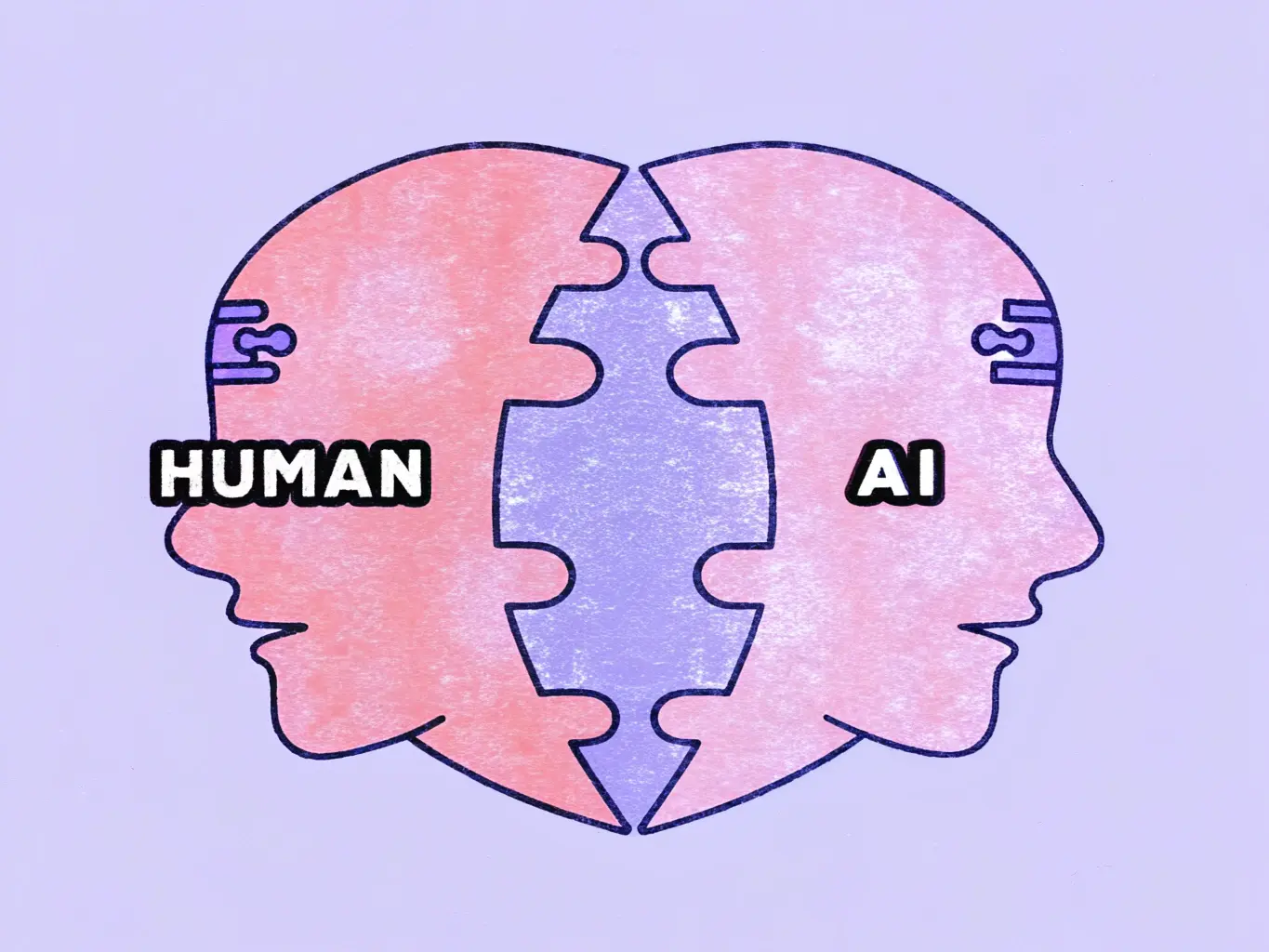TL;DR
Search is shifting from “ten blue links” to answers in AI assistants. By 2028, AI‑search traffic is projected to surpass traditional search, ~60% of Google queries already end without a click, and traffic from AI results converts ~4.4x better. Your job now: be the source AI cites and the voice people trust. Do that with a dual content strategy-machine‑readable facts + human‑crafted stories.
What’s Changing (and Why It Matters)
- AI assistants (ChatGPT, Gemini, Claude, Perplexity) are exploding in use; users ask full questions and get on‑page summaries.
- Click‑throughs shrink while high‑intent AI referrals grow.
- Mass‑produced AI blogs won’t fix this. Models can hallucinate, and Google prioritizes helpful, people‑first content-not keyword spam.

The Dual Content Strategy
1) AI‑Optimized Content (feed the machine)
Goal: Make it effortless for AI to extract accurate, current facts about your brand.
What it is
- Short, factual pages that answer specific questions: Who are you? What do you sell? Why choose you?
- Structured, scannable, and continuously updated-more like a knowledge base than a blog.
Checklist
- Concise structure: Clear headings, short paragraphs, bullets, tables, FAQs.
- Always current: Refresh after any pricing, feature, or positioning change.
- Schema markup: Add JSON‑LD so machines understand entities, prices, dates, specs.
- Neutral tone: No hype; prioritize clarity and precision.
- Dedicated location: Host on a subdomain (e.g.,
ai.example.com). - Crawler access: Explicitly allow in
robots.txtandllms.txt(for LLM crawling rights).
Think of this as your AI curriculum. The clearer the facts, the fewer hallucinations.
2) Human‑Written Content (earn trust)
Goal: Build expertise, authority, and a memorable point of view for real people.
What to publish
- Long‑form narratives (1,200–2,000 words): Lessons learned, context, and nuance.
- Thought leadership: Take a stand; offer frameworks from real practice.
- Case studies: Problems, actions, outcomes-metrics included.
- Opinion/editorial: Trends, pitfalls, contrarian takes.
Craftsmanship
- Maintain a distinctive voice (2–4 sentences per paragraph, clear subheads, white space).
- Show E‑E‑A‑T: author creds, first‑hand experience, sources, and evidence.
- Use AI for drafting if helpful, but always have experts review to prevent errors.
Make the Two Streams Work Together
- Cross‑linking:
- From AI pages → deeper blog posts for context.
- From human articles → AI pages for canonical specs and pricing.
- Consistent terminology: Keep names, labels, and claims identical across both streams.
- Responsible education: If an assistant misstates your product, update the AI page to “debug” the knowledge.
- Conversion paths:
- Human posts → clear CTAs (demo, trial, download).
- AI pages → direct paths to sign‑up or purchase.
How to Implement
- Audit existing content for missing canonical facts (company, products, tiers, pricing, differentiators).
- Define entities: the exact names and relationships for company, products, features.
- Stand up
ai.example.comwith concise, structured pages + FAQs. - Add JSON‑LD to every AI page; validate with a rich‑result tester.
- Ship a story cadence: thought leadership, case studies, and opinions in your main blog.
- Instrument and monitor:
- Track assistant citations and brand mentions.
- Segment analytics by source (organic, AI assistants, social, direct) and compare conversion.
- Set a review rhythm:
- AI pages after every launch/price change.
- Refresh evergreen human pieces annually-with real improvements, not date churn.
- Level up team skills: Use AI for research and drafts; keep humans for judgment, accuracy, and voice.
You can also launch your AI Reference Hub in minutes with GEOHQ’s GEO Optimization.
Bottom Line
Search is becoming conversational. To be recommended-whether someone types a query into Google or asks an assistant aloud-you need both machine‑readable facts and human‑readable stories. Invest early, keep the facts current, and keep the voice unmistakably yours. Over time, the two streams reinforce each other: AI finds you; your narrative converts and retains.


.svg)
